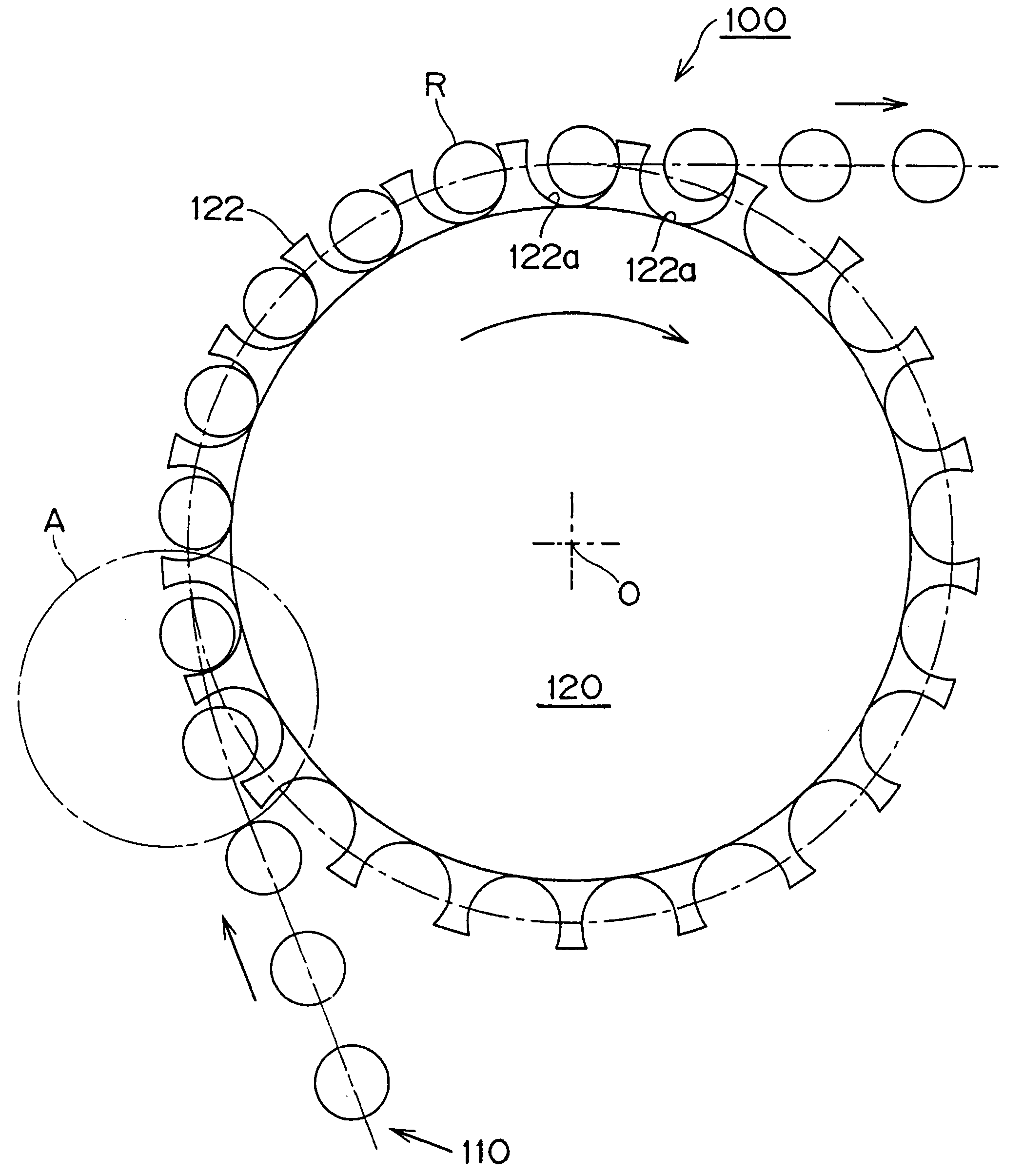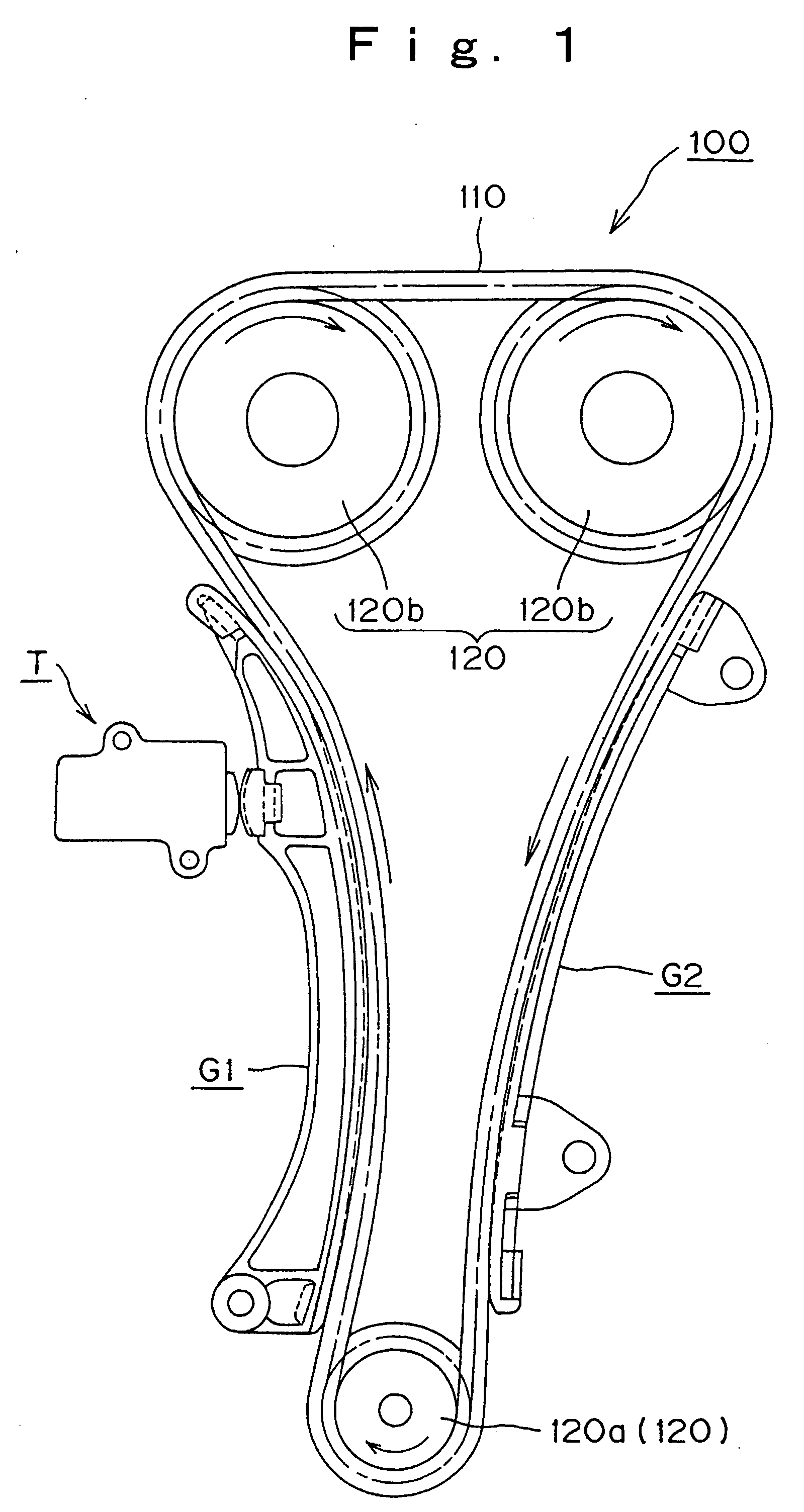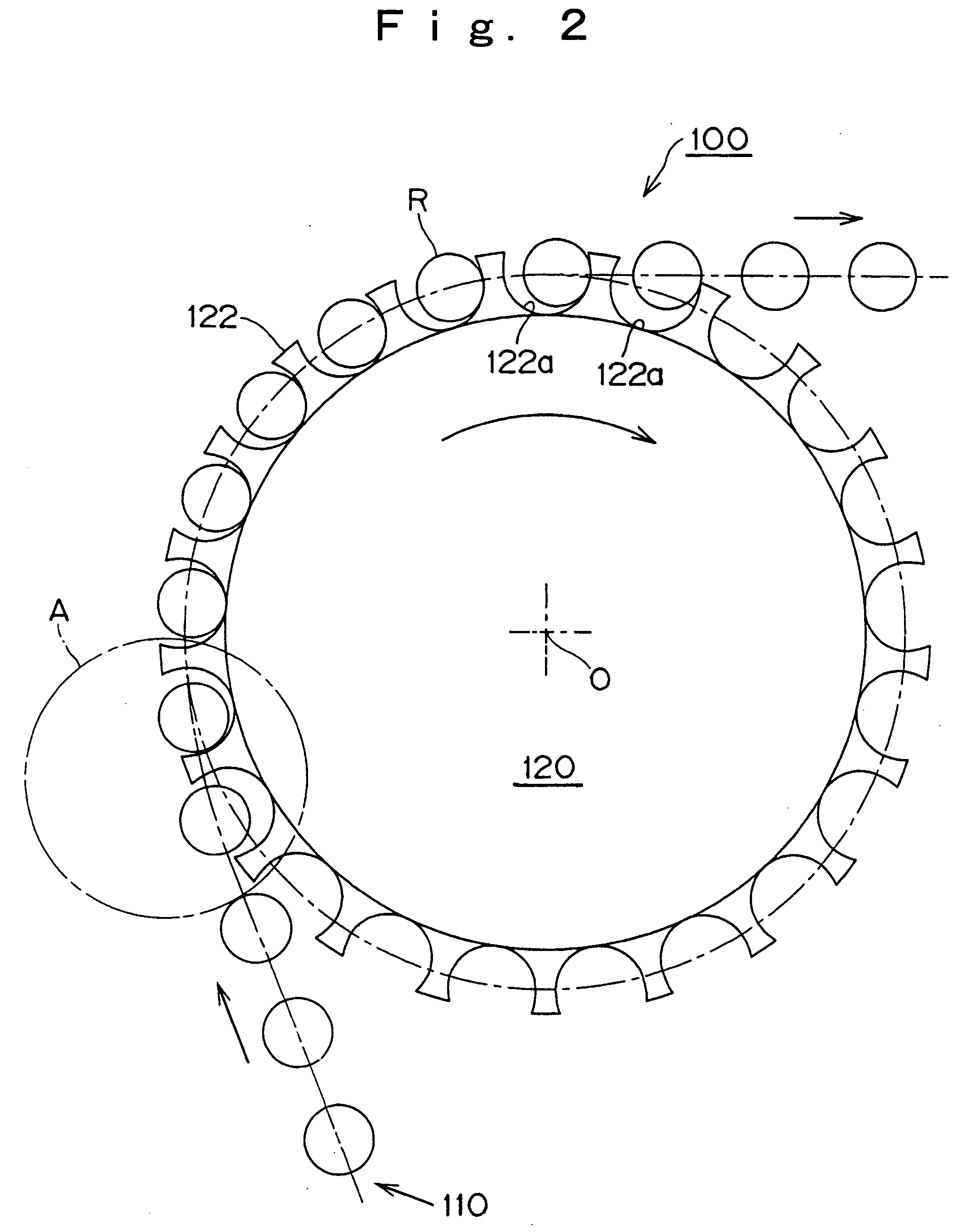Chain transmission
- Summary
- Abstract
- Description
- Claims
- Application Information
AI Technical Summary
Benefits of technology
Problems solved by technology
Method used
Image
Examples
Embodiment Construction
[0021] The chain transmission 100, shown in FIG. 1, is a timing transmission used in to operate the intake and exhaust valves of a DOHC vehicle engine, and is composed of a roller chain 110, and a set of sprockets 120, including a driving sprocket 120a on the engine crankshaft, and two driven sprockets 120b, respectively on an intake valve camshaft and an exhaust valve camshaft. As noted previously, although a roller chain is shown, the chain can be a bushing chain, an offset type chain, a seal chain, or the like. A tensioner T controls tension in chain 110 by pressing against the back of a pivoted guide G1 on which the slack side of the chain slides, and the tension side of the chain slides on a fixed guide G2.
[0022] In the sprocket 120, as shown in FIGS. 2 and 3, sprocket teeth 122 are formed on a sprocket body 121. Each tooth has a front tooth surface 122b, facing in the direction of sprocket rotation, and a back tooth surface 122c facing in the opposite direction. The front sur...
PUM
 Login to View More
Login to View More Abstract
Description
Claims
Application Information
 Login to View More
Login to View More - Generate Ideas
- Intellectual Property
- Life Sciences
- Materials
- Tech Scout
- Unparalleled Data Quality
- Higher Quality Content
- 60% Fewer Hallucinations
Browse by: Latest US Patents, China's latest patents, Technical Efficacy Thesaurus, Application Domain, Technology Topic, Popular Technical Reports.
© 2025 PatSnap. All rights reserved.Legal|Privacy policy|Modern Slavery Act Transparency Statement|Sitemap|About US| Contact US: help@patsnap.com



